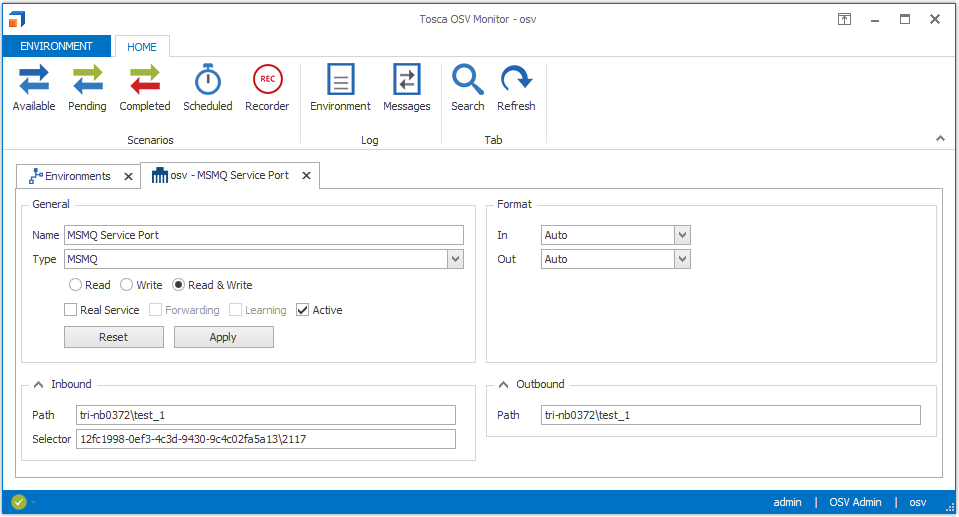Configure MSMQ
Use the service port type MSMQ to connect to Microsoft Message Queuing (MSMQ) queues.
A MSMQ queue temporarily stores messages that are sent by one or more senders and read by one or more receivers. This allows different systems to communicate independently. For more information on working with MSM messages, see chapter "Run MSMQ messages".
For more information on MSMQ, see the MSMQ documentation.
Configure your service port
Once you have created your service port, you can configure the general service port details:
|
Attribute |
Description |
|---|---|
|
General - Name |
Enter the name of the service port. |
|
General - Type |
Select your service port technology. |
|
Read / Write / Read & Write |
Select what your service port should do with messages:
|
|
Real Service |
Select if you want to connect to a real service. |
|
Allow OSV to forward requests to the real service. To use this option, you need to select Real Service. |
|
|
Allow OSV to store forwarded messages in the Recorder tab. To use this option, you need to enable Forwarding. |
|
|
Active |
Select if you want your service port to be active, deselect to set it to inactive. |
To connect to MSMQ, specify the following attributes:
|
Attribute |
Description |
|---|---|
|
Path |
Specify the Path to the queue. Use the name of the machine that stores the queue messages and the name of the queue as follows:
|
|
Selector |
Define a selector to pull only specific incoming messages. You can filter for message details, such as the MessageID. If you don't specify a selector, you receive the first message from the queue. If more than one message matches your filter criteria, you receive the first matching message from the queue. |

MSMQ service port
To save your changes, click Apply. To discard your changes, click Reset.